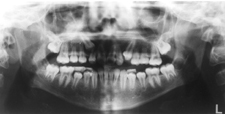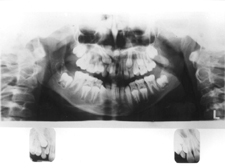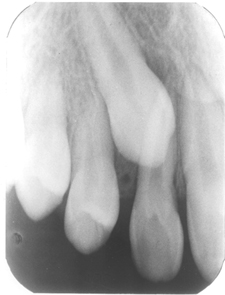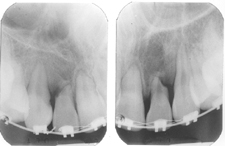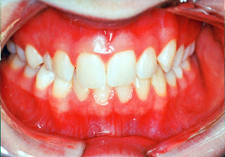 |
| Figure 1: Clinical examination revealed asymmetry between right and left cuspids; the 53 was overretained and not mobile whereas the 63 had exfoliated naturally allowing the 23 to erupt into the arch. The 13 was palatally impacted and required surgical exposure and orthodontic alignment. |
